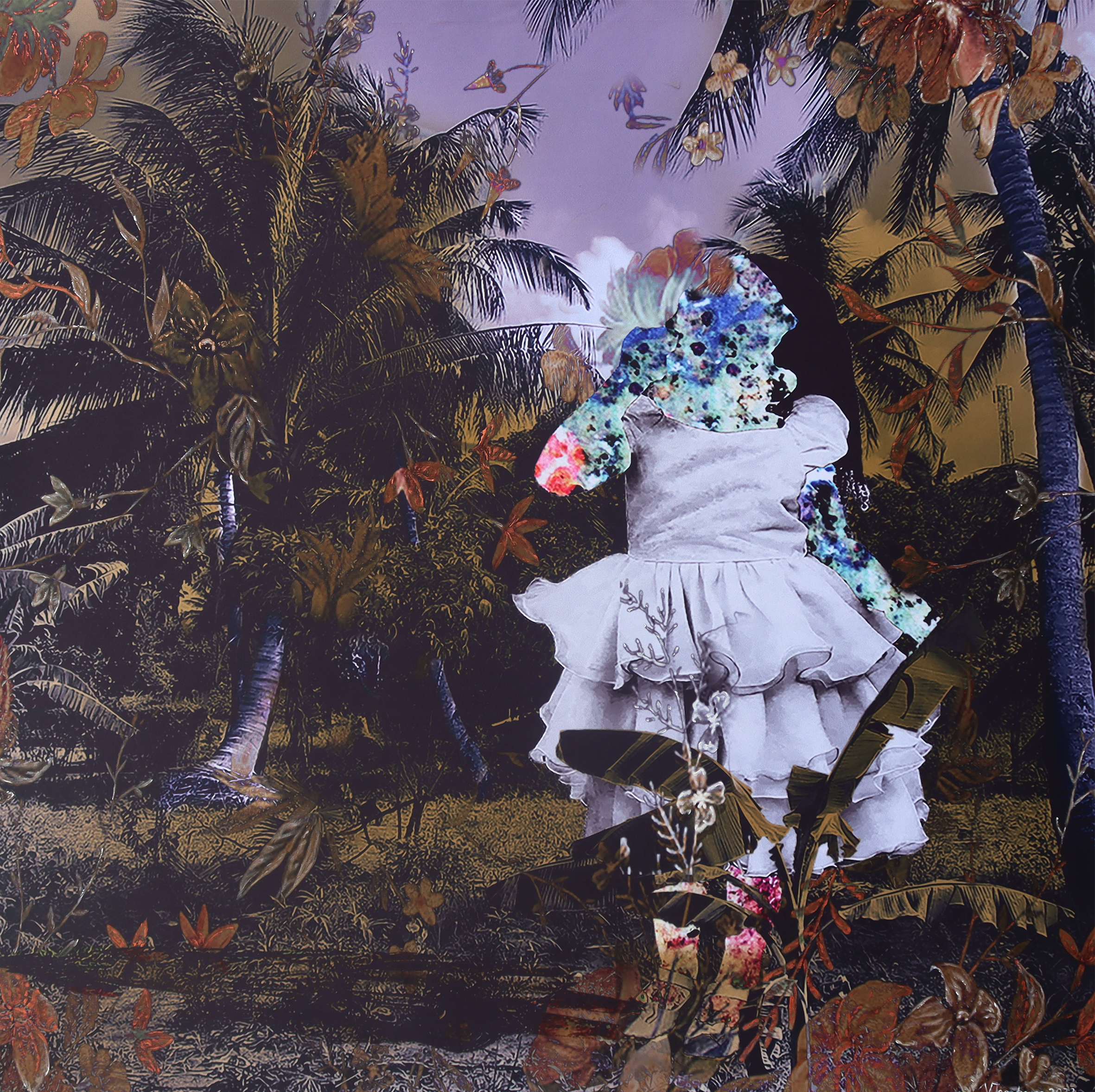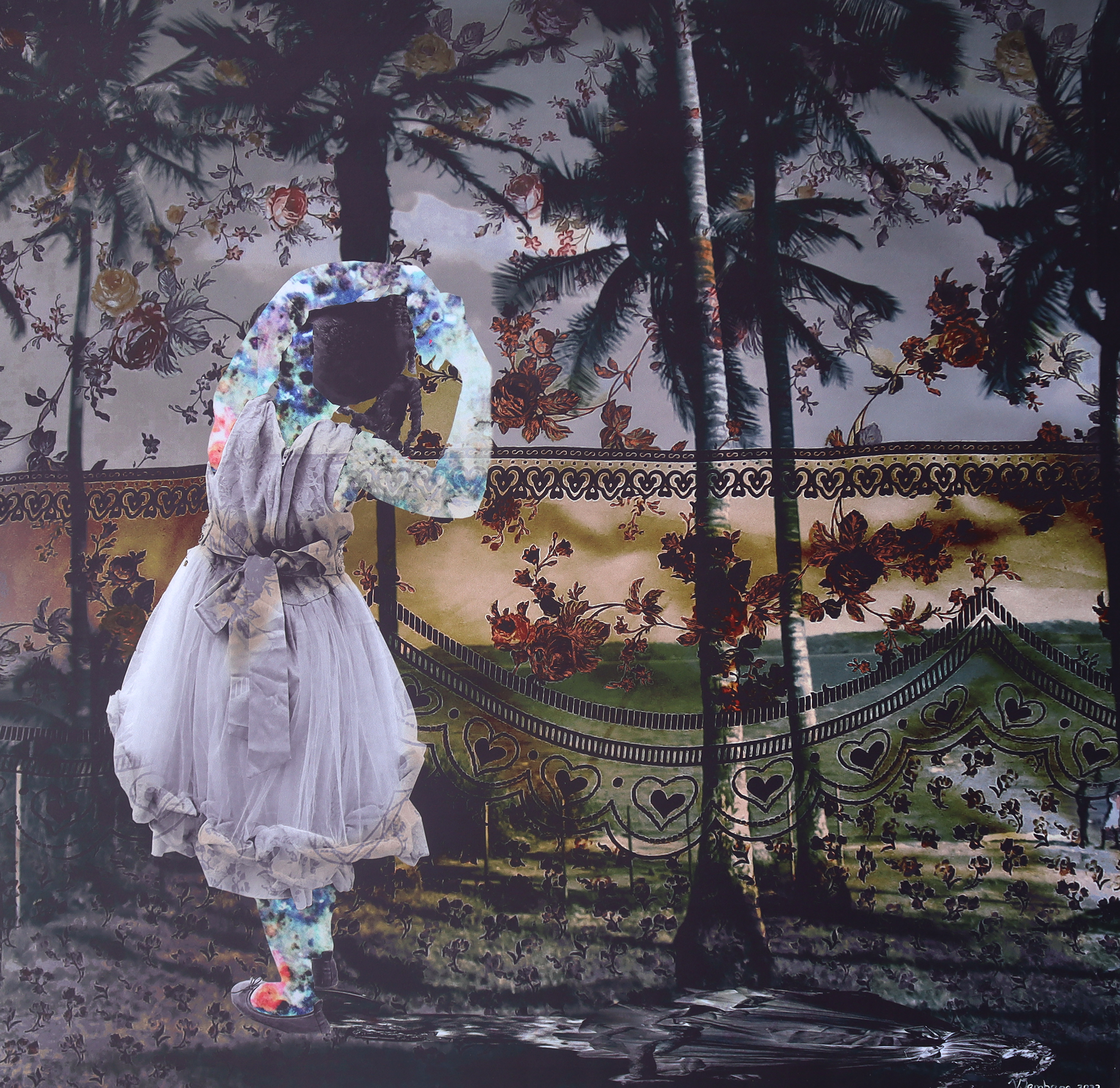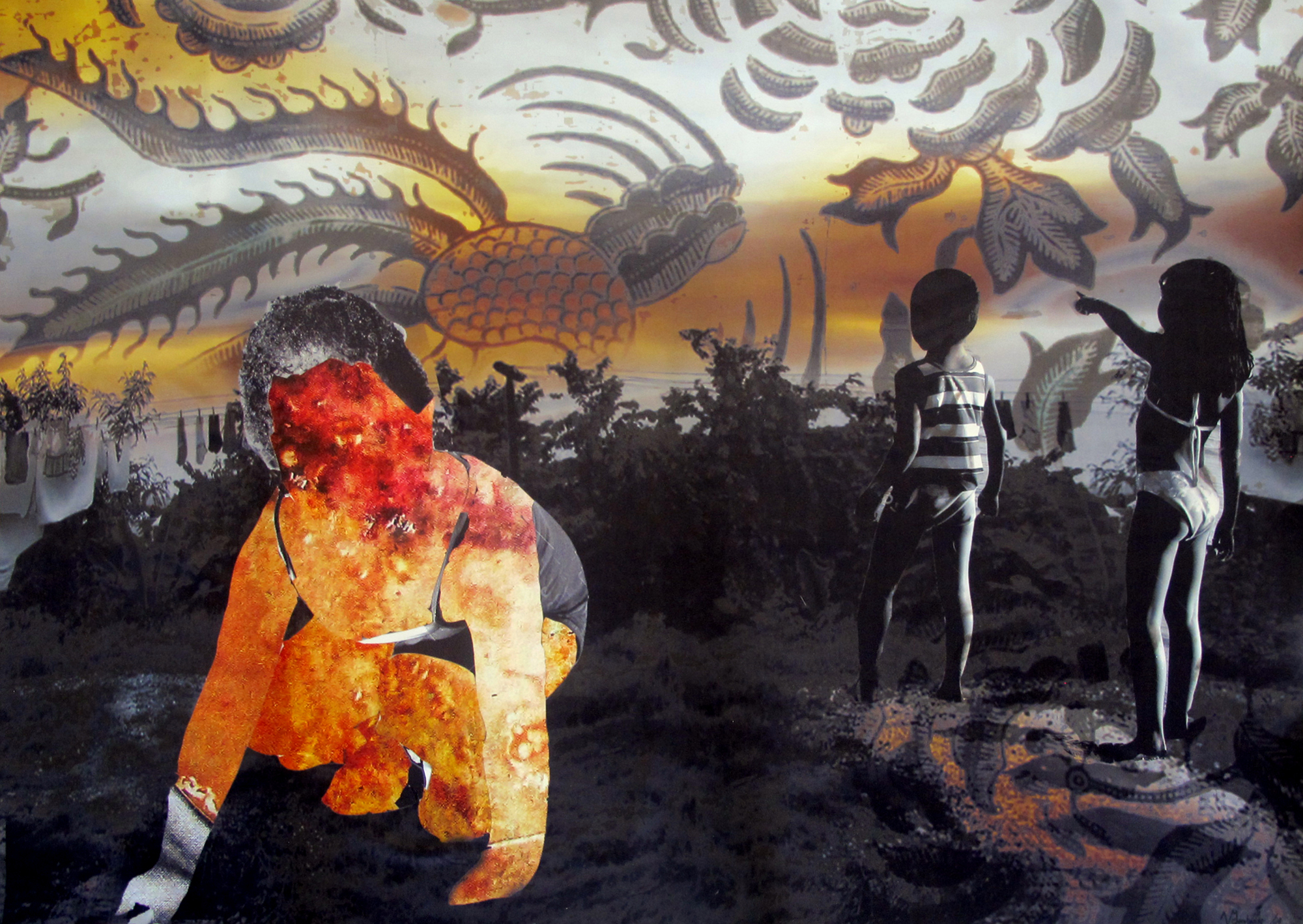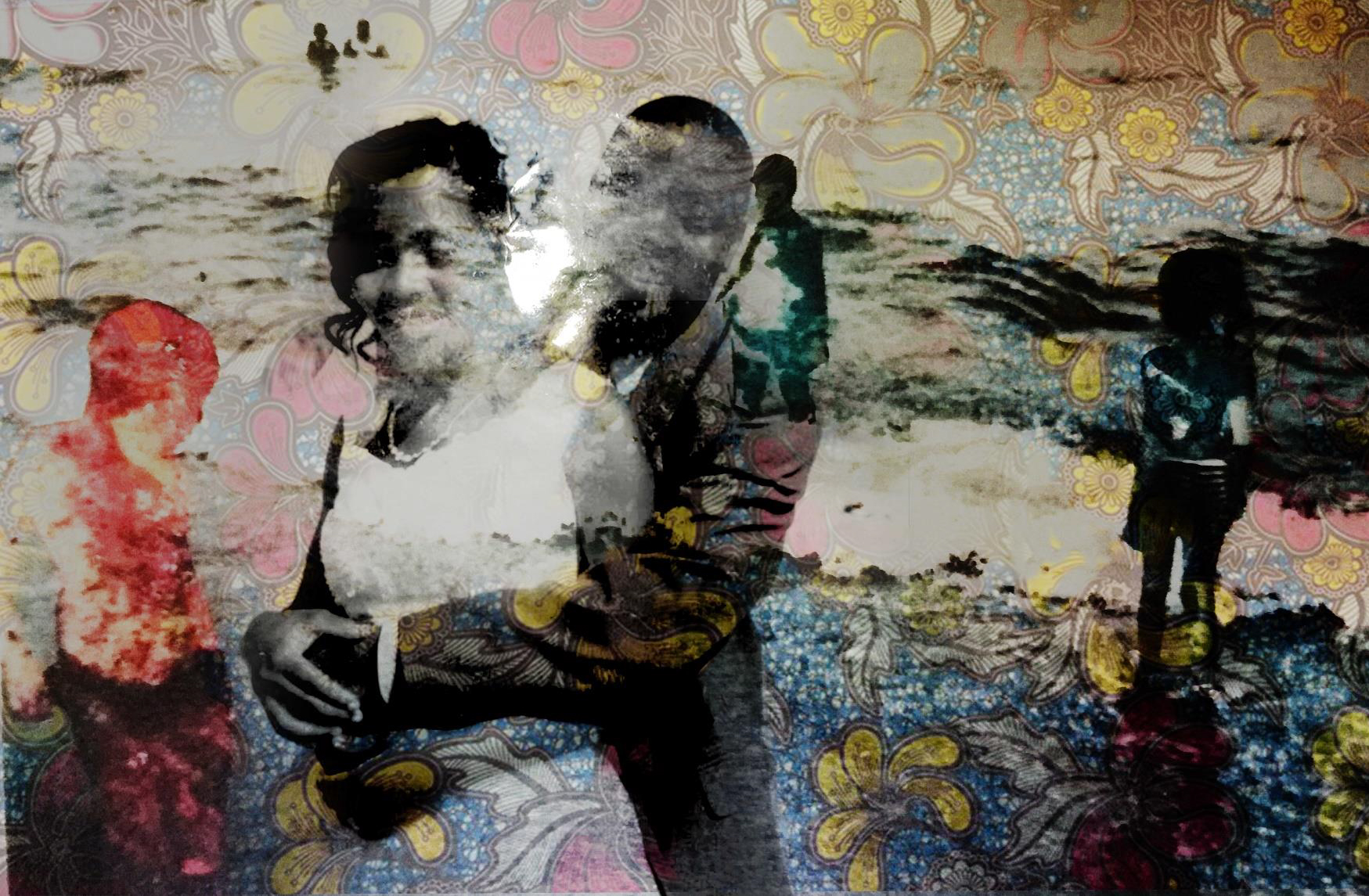Vanessa Tembane has established a creative practice that is at once bold and gentle. Her remarkably layered works – which integrate digital prints and paint on various materials – are immediately moving and suggestive of multiple realities and cross-generational existences. They are clear representations of someone grappling with a nuanced history, one that traverses many places and states of being. INCCA talks to her about her practice, both its challenges and rewards.
INCCA: Your artwork is deeply rooted in very personal relationships with your mother, her migration to South Africa, as well as your maternal grandmother still based in Mozambique. You’ve been dealing with this subject matter for quite a few years. How has centering your artwork on this subject affected your sense of place and your individual relationships?
Vanessa Tembane (VT): Centering my work on my relationships with my grandmother and mother has helped me understand the intergenerational transmission of knowledge, memories and narratives and how they have informed my sense of self.
My grandmother and I live in completely different realities. My grandmother’s reality is based in Zavala, Mozambique, where she has lived and raised her children, while my reality is based in South Africa where I was born and raised. My mother, however, has lived in both our realities because she was born in Zavala, raised by my grandmother, and moved to South Africa when she was older and raised me. She has become the translating link in our communicative chain as she bridges my grandmother’s reality and my own, both linguistically and metaphorically. Her presence maintains the connection in the relationship between my grandmother and me. Both my mother and grandmother have had their own ways of narrating their own experiences. My chosen form of narration has manifested itself through my work. My practice has become a place for me to explore and uncover new layers of myself and my thoughts, by engaging with my own image in relation to my grandmother and mother.
Vanessa Tembane (VT): Centering my work on my relationships with my grandmother and mother has helped me understand the intergenerational transmission of knowledge, memories and narratives and how they have informed my sense of self.
My grandmother and I live in completely different realities. My grandmother’s reality is based in Zavala, Mozambique, where she has lived and raised her children, while my reality is based in South Africa where I was born and raised. My mother, however, has lived in both our realities because she was born in Zavala, raised by my grandmother, and moved to South Africa when she was older and raised me. She has become the translating link in our communicative chain as she bridges my grandmother’s reality and my own, both linguistically and metaphorically. Her presence maintains the connection in the relationship between my grandmother and me. Both my mother and grandmother have had their own ways of narrating their own experiences. My chosen form of narration has manifested itself through my work. My practice has become a place for me to explore and uncover new layers of myself and my thoughts, by engaging with my own image in relation to my grandmother and mother.
INCCA: You’ve spoken about the way in which you ultimately create imagined places of belonging in your work, which are palimpsests that coalesce existing family photographs with your own images as well as various fabrics such as “capulanas” given to you by your family in Mozambique. Have you found this process of creation freeing in any way, and if so, how?
VT: Yes, it has been freeing. My process has always been intuitive, I rarely know what the final product will look like but I do know when it feels right. My process has afforded me the opportunity to uncover new layers of myself and my thoughts. I think that there is a sense of power that comes with engaging with these new layers because they allow me to come to terms with my sense of belonging and place in my family. My process has become somewhat therapeutic for me. I get to question and address my feelings and thoughts and allow new meanings to come from it.
VT: Yes, it has been freeing. My process has always been intuitive, I rarely know what the final product will look like but I do know when it feels right. My process has afforded me the opportunity to uncover new layers of myself and my thoughts. I think that there is a sense of power that comes with engaging with these new layers because they allow me to come to terms with my sense of belonging and place in my family. My process has become somewhat therapeutic for me. I get to question and address my feelings and thoughts and allow new meanings to come from it.
INCCA: Could you speak about the varying physical places and contexts that influence you?
VT: Growing up, I always felt that I was born into a displaced space because of my mother’s immigration. Even though I was born and raised in South Africa, my history is also deeply rooted in my mother’s native country. The are three places that have influenced me and my practice, namely, the Vaal Triangle, Mozambique, and Johannesburg.
Growing up in the Vaal Triangle, I tried my best to fit in with my peers, from the way I dressed to the way I acted. I also learned Sesotho because I lived in a community where the majority of my friends were Sesotho speakers. I always saw the Vaal Triangle as home because that’s where my mom was, but I always felt that I was too foreign for that home.
When I think of my grandparent’s home in Mozambique, I always thought of it as an idyllic tropical destination that is covered with warm beach sand that my feet sink into and tall coconut trees. However, it is also the place where I have always felt the need to fit in and be recognised by my family members, more specifically, by my grandmother. I think that my idealisation of Mozambique has created a longing for experiences that I can only hope to create through my work.
However, I moved to Johannesburg for my studies and decided to stay here permanently. It became a blank slate in the sense that it does not come with the emotional baggage of an origin or a becoming... I can just be here. I have no idea if that will change over time but right now, I just appreciate it for what it is.
VT: Growing up, I always felt that I was born into a displaced space because of my mother’s immigration. Even though I was born and raised in South Africa, my history is also deeply rooted in my mother’s native country. The are three places that have influenced me and my practice, namely, the Vaal Triangle, Mozambique, and Johannesburg.
Growing up in the Vaal Triangle, I tried my best to fit in with my peers, from the way I dressed to the way I acted. I also learned Sesotho because I lived in a community where the majority of my friends were Sesotho speakers. I always saw the Vaal Triangle as home because that’s where my mom was, but I always felt that I was too foreign for that home.
When I think of my grandparent’s home in Mozambique, I always thought of it as an idyllic tropical destination that is covered with warm beach sand that my feet sink into and tall coconut trees. However, it is also the place where I have always felt the need to fit in and be recognised by my family members, more specifically, by my grandmother. I think that my idealisation of Mozambique has created a longing for experiences that I can only hope to create through my work.
However, I moved to Johannesburg for my studies and decided to stay here permanently. It became a blank slate in the sense that it does not come with the emotional baggage of an origin or a becoming... I can just be here. I have no idea if that will change over time but right now, I just appreciate it for what it is.
I have prioritised my freedom as a practicing artist in terms of the people I work with and the spaces I occupy.
INCCA: You were awarded the prestigious Ampersand Fellowship in 2018. How was this experience, what did it entail and how has it influenced your practice?
VT: The Ampersand Foundation is a fully funded residency program at the Ampersand apartment in New York City. I had access to the American Association of Museums card which granted me free access to amazing museums and galleries In New York. The whole experience was invaluable to me, especially because I was part of the residency in the first year of my master’s program. It exposed me to different forms of art, techniques, subject matters. It felt a little like an art overload, but one that I was happy to experience. I think it opened my mind to how endless the possibilities are and how in reach they are for me.
VT: The Ampersand Foundation is a fully funded residency program at the Ampersand apartment in New York City. I had access to the American Association of Museums card which granted me free access to amazing museums and galleries In New York. The whole experience was invaluable to me, especially because I was part of the residency in the first year of my master’s program. It exposed me to different forms of art, techniques, subject matters. It felt a little like an art overload, but one that I was happy to experience. I think it opened my mind to how endless the possibilities are and how in reach they are for me.
INCCA: You appear to be an artist who has managed to navigate the art industry in a remarkably independent way. What has driven you and how have you managed to self-organise and show work in the various contexts that you have?
VT: It rarely feels like I am doing a good job but I think I have prioritised my freedom as a practicing artist in terms of the people I work with and the spaces I occupy. It is really important for me to work with people who understand my perspective and what I am trying to say and do through my practice. It not the easiest way to go about doing things but I find that it sets me up to be in a nourishing mental space to keep doing what I want to do.
INCCA: What are you currently working on?
VT: I am currently working on a series where the shadows of my figures start becoming beings in their own right, almost separate from their origins but existing alongside them. I have always felt that the shadows in my work long to feel whole and they long for acceptance. Through this body of work I want to explore my real self and my shadow self. What is and what might have been.
VT: It rarely feels like I am doing a good job but I think I have prioritised my freedom as a practicing artist in terms of the people I work with and the spaces I occupy. It is really important for me to work with people who understand my perspective and what I am trying to say and do through my practice. It not the easiest way to go about doing things but I find that it sets me up to be in a nourishing mental space to keep doing what I want to do.
INCCA: What are you currently working on?
VT: I am currently working on a series where the shadows of my figures start becoming beings in their own right, almost separate from their origins but existing alongside them. I have always felt that the shadows in my work long to feel whole and they long for acceptance. Through this body of work I want to explore my real self and my shadow self. What is and what might have been.








